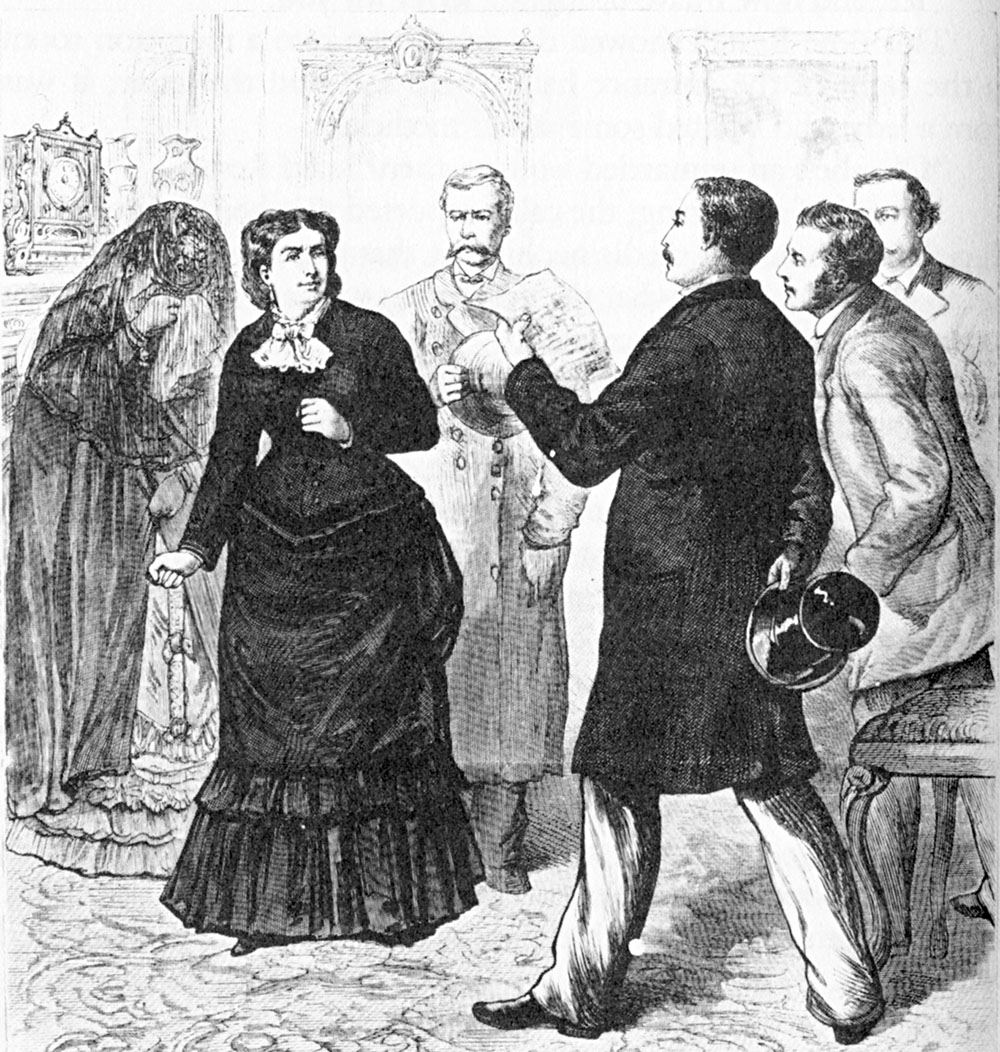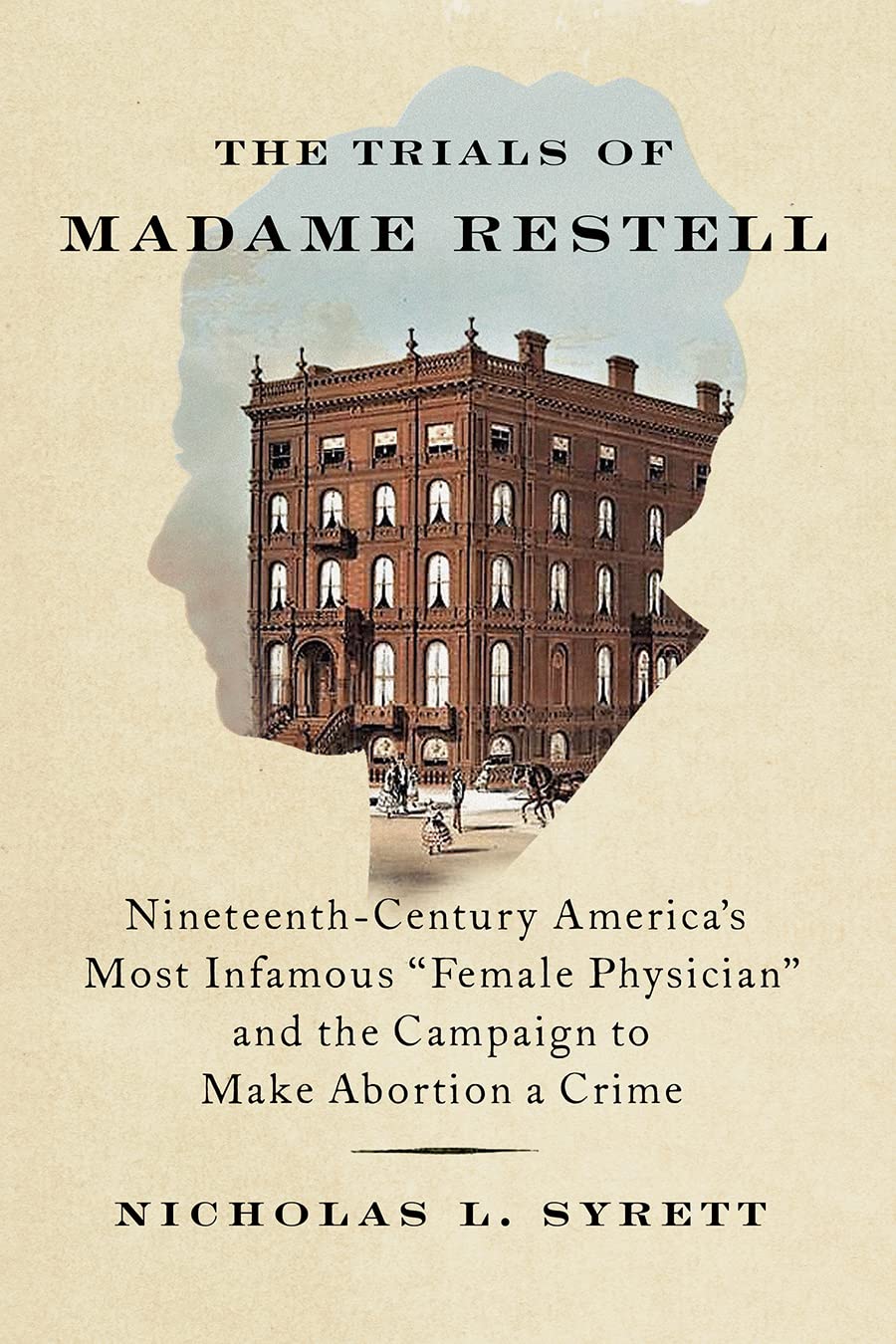‘Infamous’ woman physician at center of criminalizing abortion profiled in new biography

LAWRENCE — The word “Restellism” used to be synonymous with abortion. The term was coined because of the notorious Madame Restell, a wealthy midwife who became a renowned and divisive figure in America during the 1800s.

“She was famous enough that anyone who saw that word in a newspaper knew Restellism was referring to her,” said Nick Syrett, a professor of women, gender & sexuality studies at the University of Kansas.
But who exactly was Madame Restell? That is answered in Syrett’s new book titled “The Trials of Madame Restell: Nineteenth-Century America’s Most Infamous Female Physician and the Campaign to Make Abortion a Crime.” This account also features unmistakable parallels to current political and social issues that still divide the nation. It’s published by The New Press.
Syrett first ran across her story while attending graduate school at the University of Michigan.
“She is basically a figure in everyone’s history of New York City or prostitution or contraception or abortion. She appears everywhere, but generally for only a page or two,” he said.
Madame Restell was actually the pseudonym of Ann Trow Summers Lohman, a British-born woman who immigrated to the U.S. in 1831. She ran what was called a “lying-in hospital,” which was a place where women “could stay during their pregnancies and be delivered of their babies.”

“This is in some ways a conventional biography. A story from birth to death with what happened in between,” Syrett said.
Yet Restell’s life was anything but conventional.
He said, “Most of the dialogue about her in the 19th century was critical. No one stood up for her. So what I tried to do is understand what motivated her. What was she trying to do? How did she serve people’s needs? And why did she call herself what she did?”
The era in which Restell practiced is notable for being when abortion went from a vaguely regulated misdemeanor to a full-blown felony. It follows the trajectory over that period (1820s to 1880s) in which the act is increasingly criminalized.
“There are numerous reasons for why this occurred,” said Syrett, who is also an associate dean at KU’s College of Liberal Arts & Sciences.
He said that beginning in 1857, doctors in the American Medical Association lobbied state legislatures to criminalize abortion, in part so that they could eliminate the competition of lay practitioners who did not have medical degrees.
“It’s also due to concerns about single women getting pregnant and being able to disguise and/or terminate a pregnancy and not get in trouble for having sex outside of wedlock,” he said. “It’s nativist fears about the white middle-class birthrate going down while immigrant birthrates are going up. It’s fears of middle-class married women taking control of their own reproductive lives and trying to have smaller families. And then it’s also a fear that the most successful abortion providers were women, and women were expected — like Madame Restell — to be housewives and mothers.”
While Restell was indeed a wife and mother, she was also a wildly prosperous entrepreneur in a society not eager to tolerate women in that role.
“She was convicted a couple of times,” Syrett said. “And once when the conviction was overturned on legal technicalities, she paid to have the entire opinion from the New York Supreme Court printed in the newspaper to prove to readers, ‘I’m not making this up.’”
The professor pored through thousands of articles while researching this story, which took him to New York’s municipal and state archives, and to the American Antiquarian Society in Massachusetts.
“The New York part was fun for me because I lived there for about 10 years. In doing the research, I went and walked the map and landscape of everywhere that she lived and practiced,” he said.
Madame Restell’s life did not have a happy ending. She was arrested by postal inspector and moral reformer Anthony Comstock, whose “Comstock laws” were aimed at banning the distribution of anything deemed obscene by the government (laws which are currently used to prosecute those sending abortion drugs through the mail). In the morning hours before her trial was to start, Restell was found in a bathtub with her throat cut. It was ruled a suicide, but rumors of it being murder have persisted to this day.
“I don’t think she was killed,” Syrett said. “I’ve seen the coroner’s report and the death certificate. It’s also quite clear that based on the testimony of the servants who worked in her household, no one would have been able to get in at night because the doors were still locked. This all demonstrates she took her own life.”
Now in his seventh year at KU, Syrett has investigated subjects ranging from maturity and masculinity to fraternities and queer history. His books include “An Open Secret: The Family Story of Robert and John Gregg Allerton” (University of Chicago Press, 2021) and “American Child Bride: A History of Minors and Marriage in the United States” (University of North Carolina Press, 2018). He is also co-editor of the Journal of the History of Sexuality.
“Madame Restell is a fascinating figure in her own right,” Syrett said. “But I also realize lots of people in the U.S. don’t know that abortion was legal in colonial America through the early 19th century. If this book educates us more about how it came to be criminalized, that can help us understand the debates we’re having now.”
Top image: The cover art from an 1878 edition of the New York Illustrated Times depicts the arrest of Madame Restell by Anthony Comstock. Wikimedia Commons image.